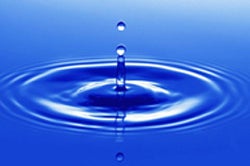
UCLA researchers invented new membrane that promises to improve efficiency and effectiveness of water filtration and desalination
With failing infrastructure and increasing contamination of surface waters, aquifers and wells, the purity of water resources is a growing concern in the industrialized world. In poorer countries, where communities lack critical infrastructure and water treatment facilities, millions of people are sickened every year by tainted drinking water.
To improve the safety of drinking water, researchers at The University of California, Los Angeles (UCLA), have invented a new membrane that promises to improve the efficiency and effectiveness of water filtration and desalination processes. Eric M.V. Hoek, Ph.D., assistant professor of civil and environmental engineering at the Henry Samueli School of Engineering and Applied Science, and UCLA’s California NanoSystems Institute, began developing his nano-composite membranes in 2003.
The technology consists of specially designed nanoparticles embedded within the membrane. The nanoparticles soak up water like a sponge but repel contaminants such as dissolved salts, industrial chemicals and bacteria. This results in high purity water with lower energy consumption, in addition to longer-lasting, cleaner membranes that do not become clogged with impurities — a problem with conventional membranes.
UCLA has licensed this discovery to California-based NanoH O. The advanced membrane technology can be retrofitted to existing commercial facilities, fits current desalination pressure vessels, and can be customized for specific water chemistries.
